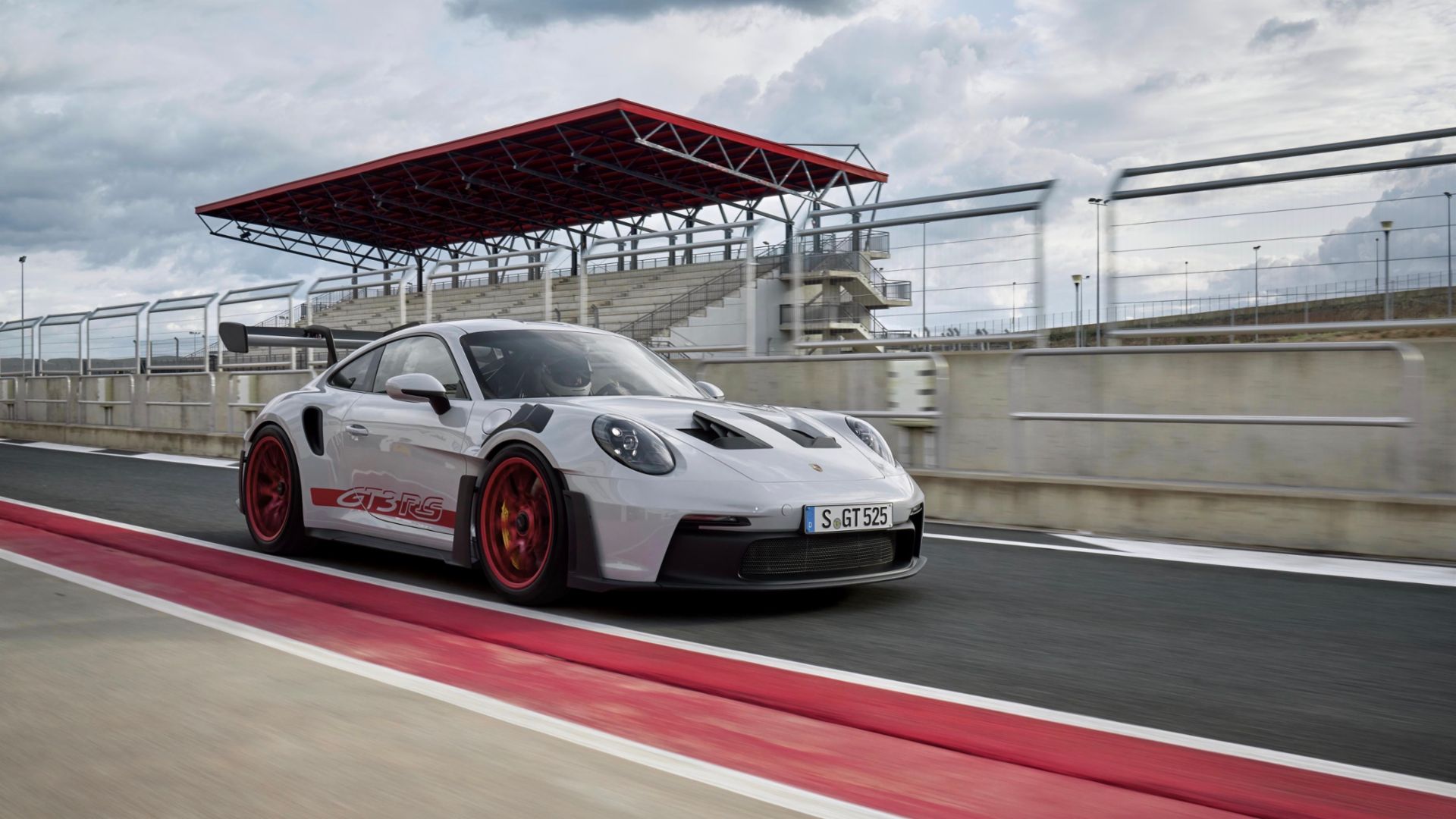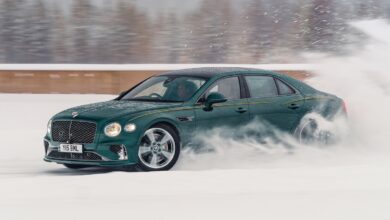Porsche Debuts New 911 GT3 RS

Porsche has debuted the new Porsche 911 GT3 RS, which has been designed for maximum performance, the company announced.
Even beyond the high-revving naturally aspirated engine and lightweight construction, it is the cooling and aerodynamic systems of the 911 GT3 RS that connect it most directly with its motorsport brother, the 911 GT3 R, the German manufacturer said.
The basis for a significant performance boost is the concept of a central radiator – an idea that was first used in the Le Mans class-winning 911 RSR and subsequently in the 911 GT3 R. Instead of the three-radiator layout seen in previous cars, the new 911 GT3 RS relies on a large, angled center radiator in the car’s nose, positioned where the luggage compartment is located on other 911 models. This has made it possible to integrate active aerodynamic elements, Porsche engineers said.
Continuously adjustable wing elements in the front and on the two-part rear wing, in combination with a number of other aerodynamic measures, provide 900 lbs. of total downforce at 124 mph (200 km/h). This means that the new 911 GT3 RS generates twice as much downforce as its 991.2-generation predecessor and three times as much as a current 911 GT3. At 177 mph (285 km/h), total downforce is 1,895 lbs.
The 911 GT3 RS is also equipped with a drag reduction system (DRS) for the first time. An airbrake function is activated during emergency braking at high speeds: the wing elements at the front and rear are set to maximum, creating an aerodynamic deceleration effect that significantly supports the wheel brakes.
The look of the new 911 GT3 RS is characterized by the large number of functional aerodynamic elements, designers said. The most prominent feature of the GT sports car is the swan-neck-supported rear wing, which is significantly larger in all dimensions. The rear wing consists of a fixed main wing and an upper, hydraulically adjustable wing element.
For the first time on a Porsche production vehicle, the upper edge of the rear wing is higher than the car’s roof. In addition, the front end of the 911 GT3 RS no longer has a front spoiler, but instead features a front splitter that divides the air flowing over and underneath. Sideblades direct air outwards. Front wheel arch ventilation is provided via louvred openings in the front wings.
Inlets behind the front wheels, in the style of the Le Mans-winning 911 GT1, reduce the dynamic pressure in the wheel arches, Porsche said. Sideblades behind the intake ensure that the air is directed to the side of the vehicle. Air from the centrally positioned radiator flows out via large nostrils on the front lid. Fins on the roof direct the air outwards, ensuring cooler intake temperatures in the rear.
In the new 911 GT3 RS, the openings in the rear side panel are used exclusively to improve aerodynamics and not to draw in process air. The rear wheel arch also features an intake and a sideblade for optimized airflow. The rear diffuser comes from the 911 GT3 and has been slightly adapted.
Even the suspension comes in for aerodynamic attention. Because the wheel arches of the new 911 GT3 RS are subject to powerful airflows, the components of the double-wishbone front axle are designed with teardrop-shaped profiles, Porsche engineers said. These aerodynamically efficient links increase downforce on the front axle by around 88 lbs. at top speed. Because of the wider track (29 millimetres wider than the 911 GT3), the double-wishbone front axle links are also correspondingly longer.
To ensure that the downforce balance between the front and rear axles is maintained even when braking from high speeds, the suspension engineers have significantly reduced pitching under braking. On the new 911 GT3 RS, the front ball joint of the lower trailing arm has been set lower on the front axle. The multi-link rear axle has also been adjusted, with modified spring rates. The driver assistance systems and rear-axle steering also have an even more dynamic set-up here.
The car is powered by a 4.0-liter naturally aspirated engine offering an increase in power to 525 hp, which is achieved primarily via new camshafts with modified cam profiles, Porsche said. The single-throttle intake system and the rigid valve drive are derived from motorsport. The seven-speed Porsche Doppelkupplung (PDK) has a shorter overall gear ratio than the 911 GT3. Air intakes on the underbody ensure that the transmission can withstand even extreme loads during frequent use on track. The 911 GT3 RS accelerates from zero to 60 mph in 3.2 seconds and reaches a top speed of 183 mph in seventh gear.
Aluminum monobloc fixed-calliper brakes with six pistons each and brake discs with a diameter of 408 mm are used on the front axle. The rear axle is fitted with 380-mm brake discs and four-piston fixed-calliper brakes.
The optionally available Porsche Ceramic Composite Brake (PCCB) has 410-mm discs on the front axle and 390-mm discs on the rear axle. The new 911 GT3 RS comes standard with forged light-alloy center-lock wheels. Road-legal sports tires measuring 275/35 R 20 at the front and 335/30 R21 at the rear ensure a high level of mechanical grip.



